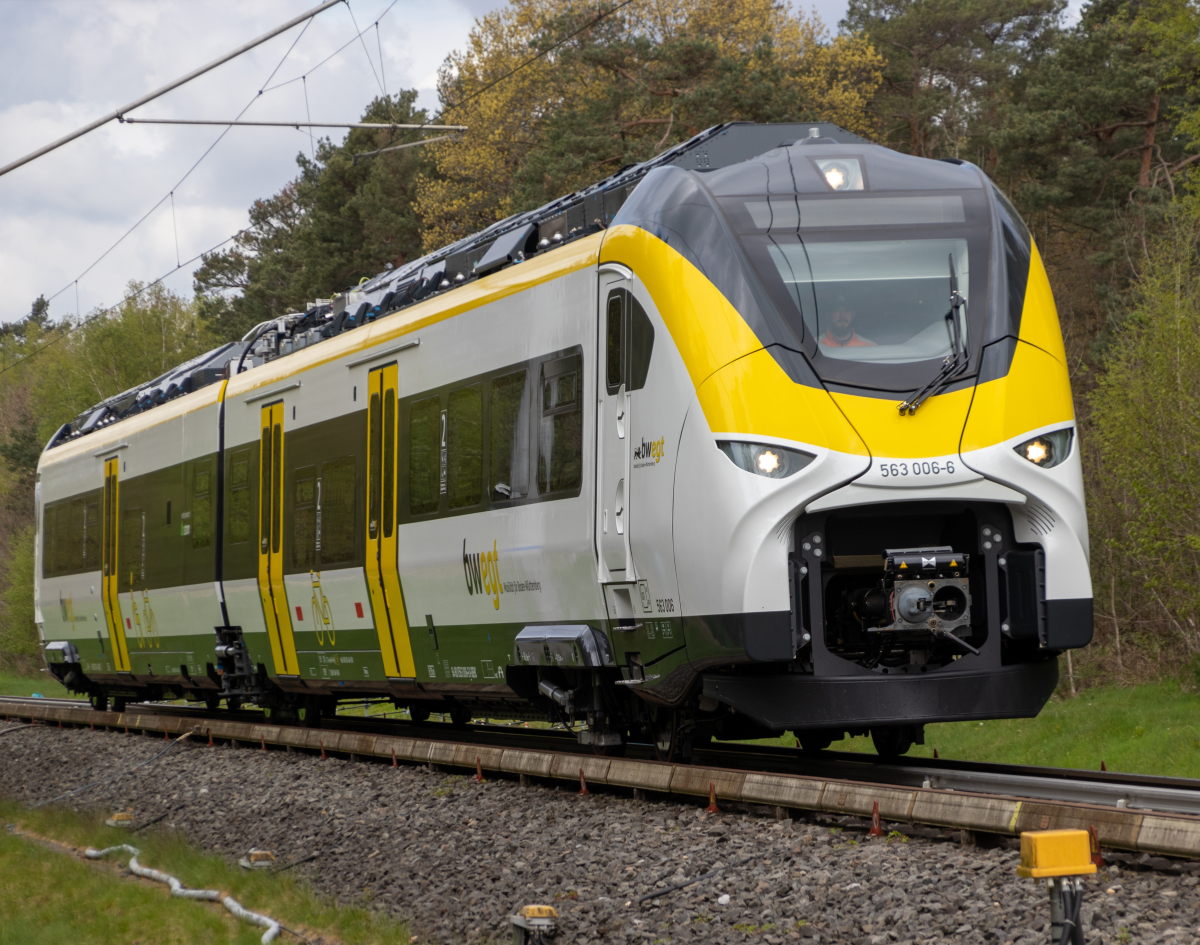Deutsche Bahn is testing fully automated train driving
“Automated Train” is the name of a new research and development project with which Deutsche Bahn intends to test the driverless driving of trains. To this end, the transport company is testing future digital rail operations together with Siemens Mobility, Bosch and other partners. In the next three years, the first priority will be to implement fully automated staging and staging trips for trains, i.e. those shunting trips that can also take place unmanned.
With the help of intelligent sensors, the vehicles will be able to detect their surroundings and react independently to obstacles – comparable to autonomous driving on the road. The project is funded by the Federal Ministry of Economics and Climate Protection – with around 42.6 million euros. The project is also co-financed with EU funds (European Recovery and Resilience Facility).
A train from Siemens Mobility and a train from the Stuttgart S-Bahn will be equipped as prototypes by 2026. The Mireo Smart from Siemens Mobility will cover the route from the depot to the first station fully automatically without a train driver. If the vehicle encounters an obstacle, it brakes automatically. The fully automatic assembly and disassembly of the train is also being tested. The second train serves, among other things, to collect data in order to recognize obstacles. The two vehicles will be equipped with the same hardware, but with different software solutions. In this way, it is possible to compare the recorded sensor data and the software’s reactions to certain events.
Editor’s Recommendations
Daniela Gerd tom Markotten, DB Board Member for Digitization and Technology, explains that the aim is to make an important contribution to more traffic on climate-friendly rail with the help of innovative technology and state-of-the-art sensor systems. “Thanks to fully automated, driverless driving, we will be able to use our trains more frequently and more flexibly in the future and thus make our travelers an even more attractive offer,” says the board member.
In addition, the company is planning a modular and open system architecture for fully automated driving with the railway industry. In this environment, standards are often more of a national issue, even if that does not make production cheaper for the partners involved (and thus also for the taxpayers). Even if Siemens Mobility is by no means breaking new ground here, Andre Rodenbeck, CEO of Rail Infrastructure at Siemens Mobility, explains: “For the first time in Germany, we are testing fully automated, driverless driving based on ETCS in regional transport. That’s why we’re proud to be part of the ‘AutomatedTrain’ research and development project.” Siemens Mobility is equipping one of the Mireo Smart regional trains with the latest GoA4 technology for preparing and preparing the train. This continues the research and development activities on driverless trains and obstacle detection around rail traffic.
Even if autonomous driving sounds like a good plan, especially for rail traffic due to the rail specifications, a large number of topics must be considered, ranging from technical to legal to economic issues. Nevertheless, there could be real progress in the foreseeable future, at least in parts, at least in the transport of goods and in shunting and set-up work through sensors and environment recognition. “The aim is to locate the position of trains reliably and precisely on the track and to enable automated departure and departure. To do this, it is important to record the course of the rails in real time and to recognize potential obstacles in front of the vehicle,” explains Frank Schmidt, member of the board of management at Bosch Engineering.
The results of the project are to be presented at Innotrans, the international trade fair for railway and transport technology, in 2026. So Deutsche Bahn will not be able to do without its engine drivers in the medium term either, but at best will be able to compensate for the lack of skilled workers anyway.



